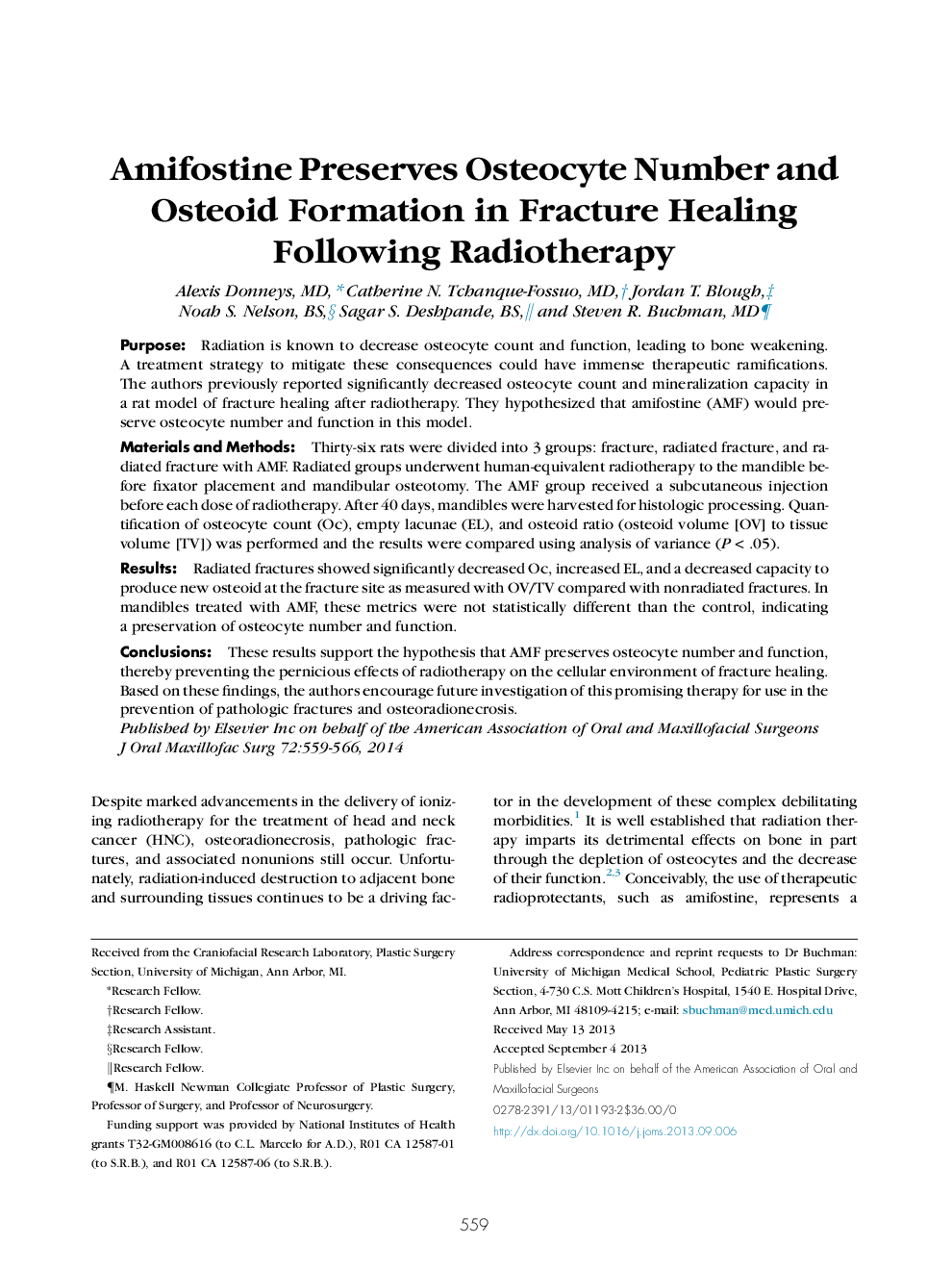| Article ID | Journal | Published Year | Pages | File Type |
|---|---|---|---|---|
| 3157947 | Journal of Oral and Maxillofacial Surgery | 2014 | 8 Pages |
PurposeRadiation is known to decrease osteocyte count and function, leading to bone weakening. A treatment strategy to mitigate these consequences could have immense therapeutic ramifications. The authors previously reported significantly decreased osteocyte count and mineralization capacity in a rat model of fracture healing after radiotherapy. They hypothesized that amifostine (AMF) would preserve osteocyte number and function in this model.Materials and MethodsThirty-six rats were divided into 3 groups: fracture, radiated fracture, and radiated fracture with AMF. Radiated groups underwent human-equivalent radiotherapy to the mandible before fixator placement and mandibular osteotomy. The AMF group received a subcutaneous injection before each dose of radiotherapy. After 40 days, mandibles were harvested for histologic processing. Quantification of osteocyte count (Oc), empty lacunae (EL), and osteoid ratio (osteoid volume [OV] to tissue volume [TV]) was performed and the results were compared using analysis of variance (P < .05).ResultsRadiated fractures showed significantly decreased Oc, increased EL, and a decreased capacity to produce new osteoid at the fracture site as measured with OV/TV compared with nonradiated fractures. In mandibles treated with AMF, these metrics were not statistically different than the control, indicating a preservation of osteocyte number and function.ConclusionsThese results support the hypothesis that AMF preserves osteocyte number and function, thereby preventing the pernicious effects of radiotherapy on the cellular environment of fracture healing. Based on these findings, the authors encourage future investigation of this promising therapy for use in the prevention of pathologic fractures and osteoradionecrosis.
